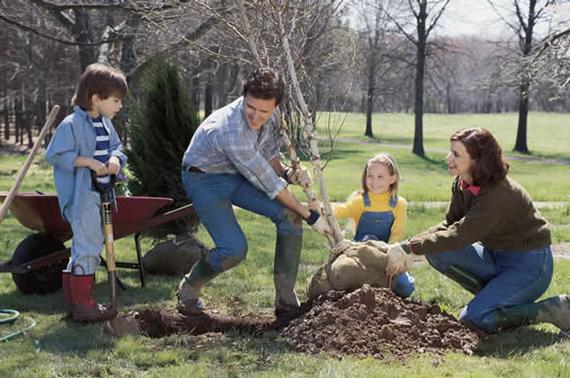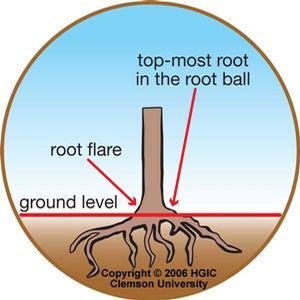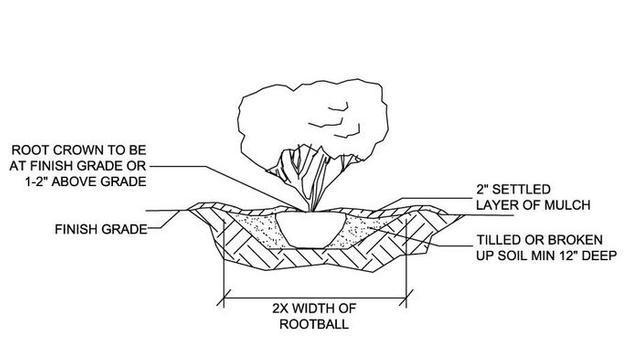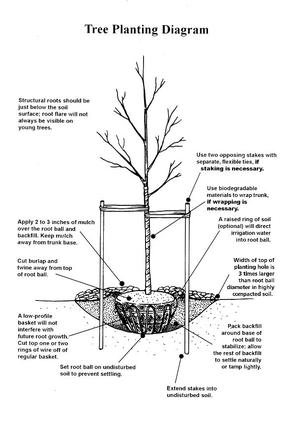Planting Tips
While planting any of the different types of plants differs slightly in the details, all plants eventually end up in a hole.... But not just any old hole will do...
- 1. Digging the hole. Dig a hole twice as wide as and slightly shallower than the root ball. This puts the backfill soil where the new tree roots will grow and leaves a base of naturally firm soil for the root ball to rest on. The most common mistake when planting is digging a hole, which is both too deep and too narrow. Too deep and the roots don't have access to sufficient oxygen to ensure proper growth. Too narrow and the root structure can't expand sufficiently to nourish and properly anchor the plant.
- 2. Roughen the sides and bottom of the hole. Smooth walls are like cement to tree root tips, so make sure to roughen the sides and bottom with a shovel.
- 3. For potted plants. Be gentle but firm when removing the container. Hit the bottom and sides of the container until the root ball is loosened. Make sure to protect the foliage by laying the tree on its side. If the roots are root bound or girdled, you should disturb the root mass before planting.
- 4. For B&B plants. Remove the string or wire than holds the burlap. The burlap surrounding the ball of earth and roots should either be cut away completely (mandatory, in the case of synthetic or plastic burlap) or at least pulled back from the top third of the ball (in the case of natural burlap) Gently separate circling roots on the root ball. Shorten exceptionally long tree roots and guide the shortened roots downward and outward.
- 5. Place the root ball in the hole. Leave the top of the root ball 1/2-inch to 1 inch above the surrounding soil, making sure not to cover it unless roots are exposed. Check for the root flare on trees (see image). If it is not visible shave off soil from the top of the root ball until it is. Make sure that the "flare" is slightly above ground level. Do not set plants too deep!
- 6. Add water. As you add soil to fill around the tree, lightly tamp it down, or add water to help settle the soil. Water the tree thoroughly after planting. A plant with a dry root ball cannot absorb water. Regular deep soakings are better than frequent light wettings. Moisture should reach a depth of 12-18" below the soil surface to encourage ideal root growth.
- 7. Mulch around the plant. For a tree, cover a 3-foot diameter area around the tree with mulch consisting of material such as bark, wood chips or pine needles (although the acidity associated with pine needles is not suited for many plants...use mostly for ericaceous plants). Leave a small circle at the base of the trunk open. Use no more than 3" of mulch for covering. For shrubs, mulch out 1.5 times the diameter of your planting hole, again using no more than 3" of mulch keeping in off the trunk and branches. For perennials, use 1-2" of mulch out slightly from the base of the plant.

A selection of images to assist in the planting of your plants. Contact us with any questions that you may have.
-
3782 Route 113, Thetford Center, VT 05075



